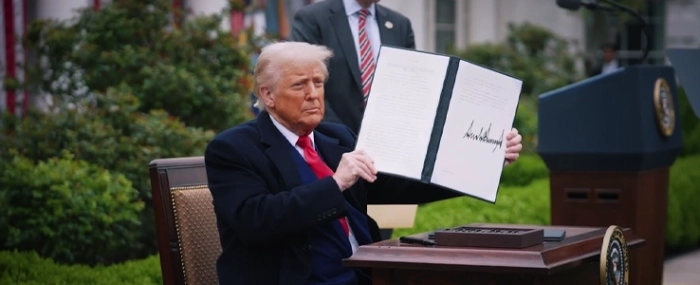
Trump’s new tariffs trigger confusion across the globe
Economists estimate the overall tariff rate on US imports at around 15% compared to the roughly 2% at the start of the year. This makes it the highest level since the 1930s. However, in a hint that Trump was open to further negotiations, the White House said that the new measures will take effect in a week.
US President Donald Trump signed an executive order imposing tariffs ranging from 10% to 41% on imports from dozens of countries, triggering another round of uncertainty in the global economy as governments around the world grapple with the implications of the new rates.
However, in a hint that Trump was open to further negotiations, the White House said that the new measures will take effect in a week.
The White House announced that the “universal” tariff for goods coming into the United States would remain at 10%, same as it was implemented on April 2. But this 10% applies only to countries with which the US has a trade surplus.
For countries with which the US has a trade deficit, a 15% rate will serve as the new tariff floor, impacting some 40 countries. Though this will end up being lower for many than the April 2 “reciprocal” tariffs, for some it will be higher.
Still, the economics and the overall point of it are a puzzle to most economists.
India’s exports to the US were slapped with a 25% tariff rate; Malaysia’s 19%; and for South Africa the figure was 30%.
Meanwhile, the deadline for a tariff deal with Mexico was extended by another 90 days.
Though Brazil’s tariff rate was set at 10%, a previous Trump order had already placed a 40% tariff on some Brazilian goods.
At 41%, Syria faces the highest tariff rate, followed by Myanmar and Laos, which may be hit by 40% tariffs. So why do these countries in particular face the steepest tariffs? Well, the short answer is, nobody knows!
For some inexplicable reason, a shocked Switzerland faces a rate of 39%. This despite the fact that Switzerland had gone through many rounds of negotiations with the US, and sensed that a mutually acceptable agreement was on the horizon.
According to a report in The New York Times, economists estimate the overall tariff rate on US imports at around 15% compared to the roughly 2% at the start of the year. This makes it the highest level since the 1930s, but it may take a while before it begins impacting households.
Meanwhile, Taiwanese officials expressed cautious optimism despite the new 20% tariff rate set by the Trump administration on goods imported from Taiwan, a major manufacturer of semiconductors.
Rates on semiconductors and other key tech goods are the subject of a US national security probe, under Section 232 of the Trade Expansion Act of 1962. Once that probe is concluded, Taiwan’s negotiating team expects to enter into further talks with their American counterparts.



